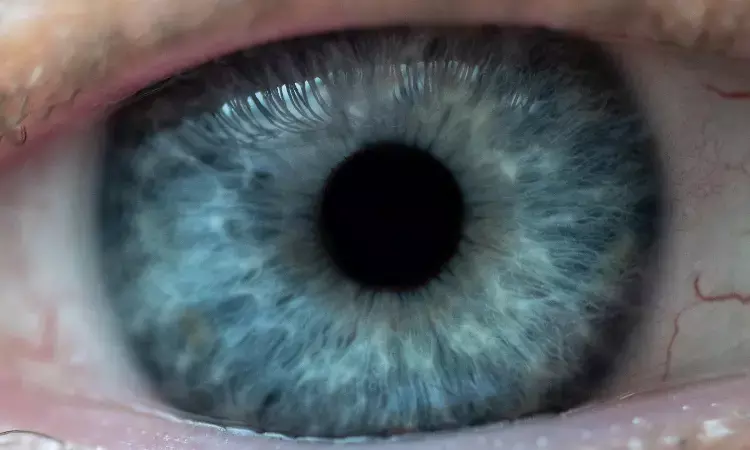- Home
- Medical news & Guidelines
- Anesthesiology
- Cardiology and CTVS
- Critical Care
- Dentistry
- Dermatology
- Diabetes and Endocrinology
- ENT
- Gastroenterology
- Medicine
- Nephrology
- Neurology
- Obstretics-Gynaecology
- Oncology
- Ophthalmology
- Orthopaedics
- Pediatrics-Neonatology
- Psychiatry
- Pulmonology
- Radiology
- Surgery
- Urology
- Laboratory Medicine
- Diet
- Nursing
- Paramedical
- Physiotherapy
- Health news
- Fact Check
- Bone Health Fact Check
- Brain Health Fact Check
- Cancer Related Fact Check
- Child Care Fact Check
- Dental and oral health fact check
- Diabetes and metabolic health fact check
- Diet and Nutrition Fact Check
- Eye and ENT Care Fact Check
- Fitness fact check
- Gut health fact check
- Heart health fact check
- Kidney health fact check
- Medical education fact check
- Men's health fact check
- Respiratory fact check
- Skin and hair care fact check
- Vaccine and Immunization fact check
- Women's health fact check
- AYUSH
- State News
- Andaman and Nicobar Islands
- Andhra Pradesh
- Arunachal Pradesh
- Assam
- Bihar
- Chandigarh
- Chattisgarh
- Dadra and Nagar Haveli
- Daman and Diu
- Delhi
- Goa
- Gujarat
- Haryana
- Himachal Pradesh
- Jammu & Kashmir
- Jharkhand
- Karnataka
- Kerala
- Ladakh
- Lakshadweep
- Madhya Pradesh
- Maharashtra
- Manipur
- Meghalaya
- Mizoram
- Nagaland
- Odisha
- Puducherry
- Punjab
- Rajasthan
- Sikkim
- Tamil Nadu
- Telangana
- Tripura
- Uttar Pradesh
- Uttrakhand
- West Bengal
- Medical Education
- Industry
OCT angiography effective in detecting microvascular changes in glaucoma;BMJ

CAPTION
Researchers have developed a potential new treatment for the eye disease glaucoma that could replace daily eye drops and surgery with a twice-a-year injection to control the buildup of pressure in the eye.
CREDIT
Rob Felt, Georgia Tech
According to the recent findings from a systematic review, Optical coherence tomography angiography (OCTA) has shown promise in observing the microvascular changes in glaucoma related to glaucoma progression or surgical intraocular pressure (IOP) lowering .The interesting reports have been put forth in the British Journal of Opthalmology, a BMJ publication.
Optical coherence tomography (OCT) is a non-invasive, light-based imaging technique which enables in vivo, cross-sectional imaging of structures, including human tissues, at high resolution.1 Its medical application is primarily in retinal imaging where current OCT devices can now accurately resolve the individual retinal layers and provide automated measures of retinal thickness estimated to the nearest micron.
A major advance of the last couple of years has been OCT angiography (OCTA), in which the detection of the phase shift of erythrocytes travelling through the retinal capillaries enables a detailed map of the retinal capillaries, and for the first time a real-time non-invasive map of retinal ischaemia.
Takinga cue from this, researchers intended to perform a systematic review of studies focusing on longitudinal changes in peripapillary and macular VD measurements in glaucoma.
As for the study design,a search was performed across MEDLINE, Scopus, ISI Web of Science and Google Scholar, using the following query from inception until 20 September 2019: (("optical coherence tomography angiography"[tiab]) OR (optical coherence tomography angiography[MeSH]) OR ("OCTA"[tiab]) OR ("OCT-A"[tiab]) OR ("angio-OCT"[tiab]) OR ("OCT- angiography"[tiab]) OR ("OCT-angio"[tiab]) OR ("OCT-angiographie"[tiab])) AND (glaucom*[tiab] OR glaucoma[MeSH]). Prospective studies that quantitatively assessed the longitudinal changes in VD in glaucoma with at least 3 months of follow-up were included.
Data analysis revealed the following facts.
- Ten out of 4516 studies were included. The rate of VD change in glaucoma varied from 0.036/year to 1.08/year and 1.3% to 3.2% per year, with significantly different rates between glaucoma and healthy controls.
- Five studies assessed VD change after glaucoma surgery, obtaining variable results, ranging from a temporary VD decrease to increase after 3 months.
- Meta-analysis was not possible due to a wide variation in methods, measurements and region of VD.
Observing the results, the team concluded that "Measures should be taken to increase the quality and standardise the methodology of VD measures in OCTA longitudinal studies, for future meta-analyses."
For the full article follow the link: http://dx.doi.org/10.1136/bjophthalmol-2020-318166
Primary source: British Journal of Opthalmology
Dr Satabdi Saha (BDS, MDS) is a practicing pediatric dentist with a keen interest in new medical researches and updates. She has completed her BDS from North Bengal Dental College ,Darjeeling. Then she went on to secure an ALL INDIA NEET PG rank and completed her MDS from the first dental college in the country – Dr R. Ahmed Dental College and Hospital. She is currently attached to The Marwari Relief Society Hospital as a consultant along with private practice of 2 years. She has published scientific papers in national and international journals. Her strong passion of sharing knowledge with the medical fraternity has motivated her to be a part of Medical Dialogues.
Dr Kamal Kant Kohli-MBBS, DTCD- a chest specialist with more than 30 years of practice and a flair for writing clinical articles, Dr Kamal Kant Kohli joined Medical Dialogues as a Chief Editor of Medical News. Besides writing articles, as an editor, he proofreads and verifies all the medical content published on Medical Dialogues including those coming from journals, studies,medical conferences,guidelines etc. Email: drkohli@medicaldialogues.in. Contact no. 011-43720751


